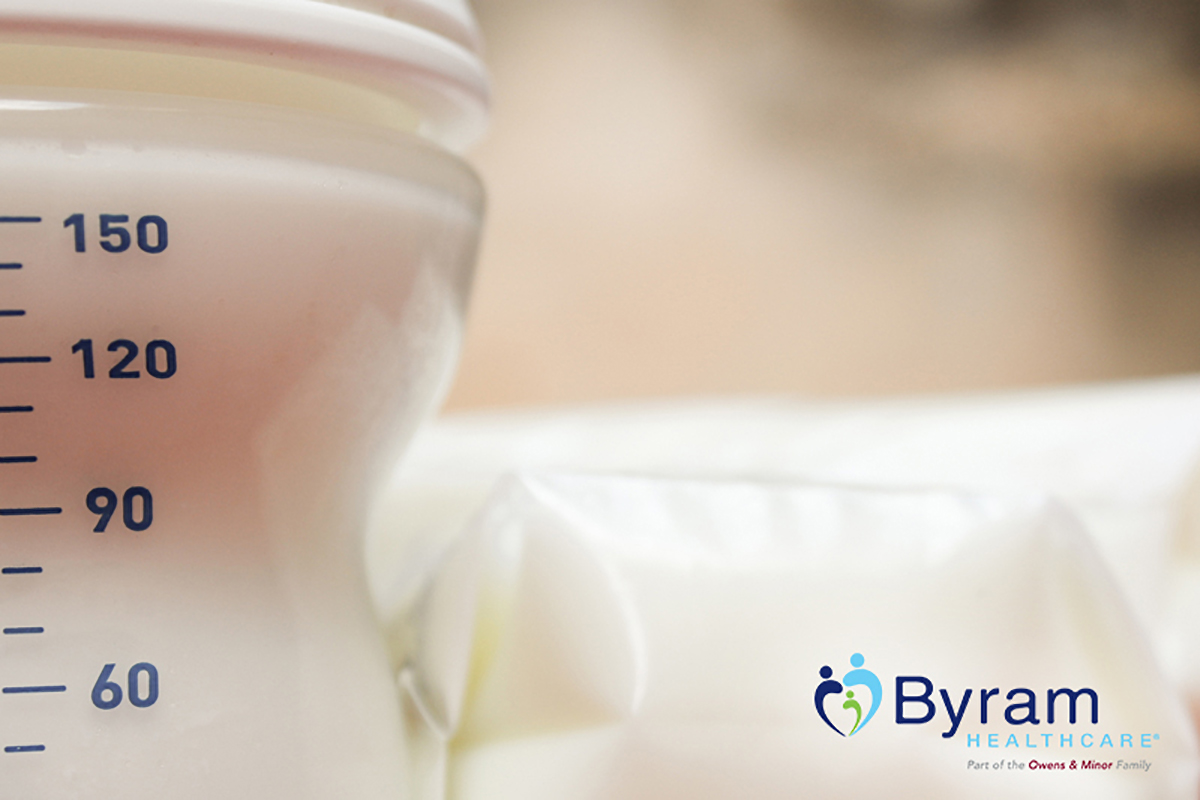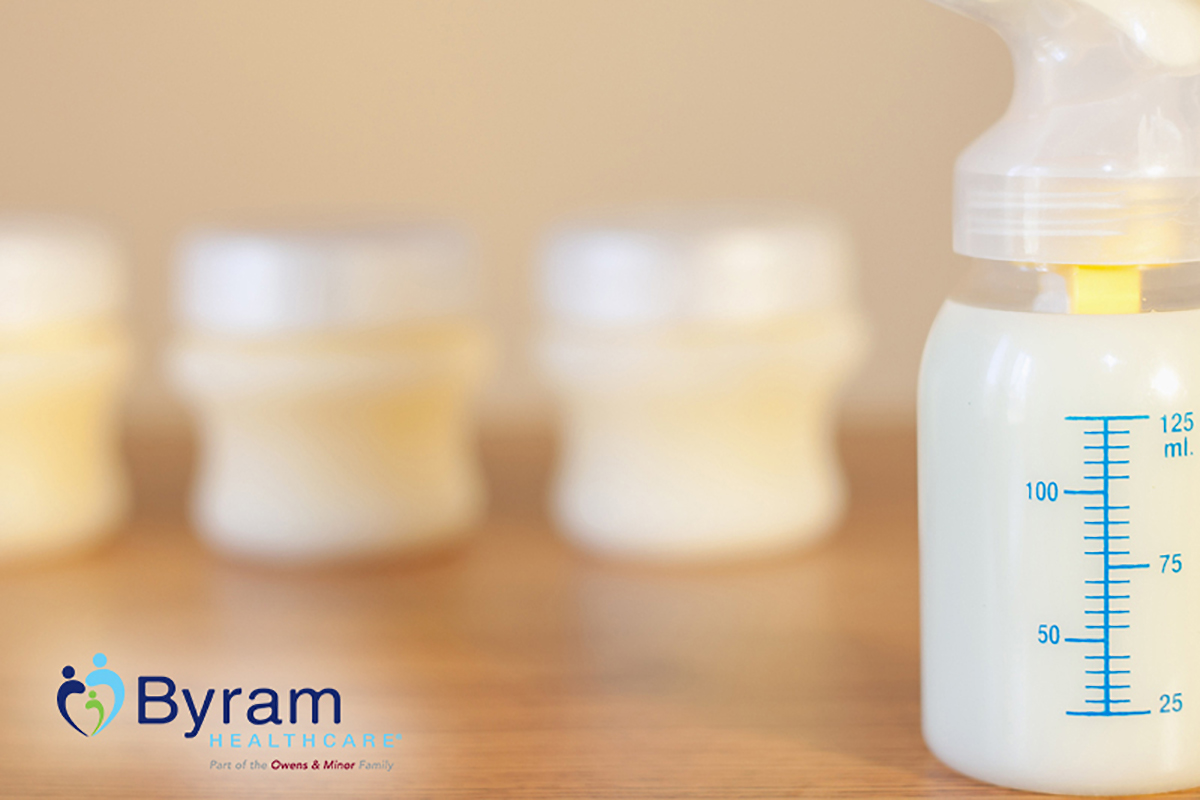How Long Does Pumped Breast Milk Last?
There’s really not one clear and concise answer for this question. Pumped breast milk has the tendency to last for different amounts of time depending on the temperature.
Breast milk has different periods of “freshness” for different storage conditions. In order to ensure that you are doing what’s best for your baby, make sure you follow the timelines for each condition. This is because over time, in addition to turning “sour”, breast milk actually looses nutritional benefits.
Sticking to the allotted timeframe is the best way to ensure that your baby is getting all of the nutrients they need for a healthy development. If you have any questions or concerns, make sure to discuss them with your primary doctor.
Now, before we get deep into what these timelines are we must discuss the golden rule…
Always, always label the breast milk that you will be storing with a time and date! If you don’t, you’ll quickly loose track of what’s fresh and what’s old. Additionally, when you look through your fridge, use the older stuff first but always throw away any breast milk that’s not used within the maximum period of time.
Oh, and if you want to give it a sniff test, which never hurts, go ahead. Just make sure you throw out any sour smelling milk… even if it’s not expired.
Now, let’s dive into timelines and figure out how long your pumped milk will last.
What’s my Timeline?
There are a lot of different ways to store breast milk and each way has it’s own lifespan. Please note that these storage guidelines are for healthy babies and they might be different for preterm, sick or hospitalized infants. In these cases, it’s important to check with your pediatrician for personalized guidelines.
Freshly Pumped Breast Milk
- Freshly pumped milk that is stored at room temperature (up to 77 degrees) will keep for up to 6 hours but ideally should be used within 4 hours.
- Freshly pumped milk kept in a warm room (80-90 degrees) will keep for 3-4 hours.
- Freshly pumped milk kept in a well insulated bag that contains ice packs surrounding the milk container will keep for up to 24 hours.
- When storing freshly pumped milk in the refrigerator, should only be kept for 5 days.
Pumped Milk in the Freezer
- Milk kept in the freezer compartment that is self-contained within a fridge will stay good for 2 weeks.
- Frozen breast milk in a regular freezer will last up to 6 months – just make sure you check it when you thaw your milk.
- Pumped milk that is stored in a deep freezer will last up anywhere from 6 to 12 months depending on the room temperature.
- Thawed, previously frozen breast milk will only last 2 hours at room temperature and 24 hours in an ice packed cooler or refrigerator.
What Kind of Containers Are Best?
In order to successfully store your breast milk, make sure that you’re using the right containers. It’s not a good idea to use the disposable feeding bottles, nor should you use any sort of regular household plastic bag due to potential contamination.
We recommend using bottles that have the following characteristics:

- Glass
- Leak proof
- BPA-free hard plastic
Some people opt for breast milk storage bags, but these have a higher risk of becoming contaminated so take extra precaution and always examine the bags before and after thawing.
How Much to Store
In order to speed up the time of preparation for breast milk, and avoid any waste, store your milk in amounts that are equivalent to your baby’s needs. This will allow enough space for expansion and also make your life much easier, especially if you’re trying to explain it to dad or the babysitter.
Typically, for babies 1-2 weeks old a feed is about 2-3oz and for a baby 1-6 months old it increases to 3-5oz. You’ll learn your baby’s individual needs as you beginning bottle-feeding breast milk.
Other Breast Milk Storage Tips
In addition to the above guidelines, there are a few things to do in order to lengthen the time your milk stays fresh.
Don’t Reuse Milk
When you first start this process, you may end up putting too much milk in the bottle for your baby to finish. A huge question is whether or not you can reuse the unfinished milk. As a general rule of thumb, the answer is nope!
Since your baby has made contact with the bottle and the milk, there is a transfer of bacteria that occurs. In order to stay on the safe side, throw out any unused milk from a feeding. As you begin to adjust to your baby’s needs, you’ll be able to prepare more accurate quantities.
Cleanliness Matters!
While preparing and storing breast milk, you should turn into a huge germophobe and be extra clean. When you limit the amount of bacteria that your milk is exposed to, you are able to slow down the process of spoiling1. Make sure you always wash your hands along with bottles and all washable parts of your pump beforehand.
Clean your breast pump according to the recommendations that it came with since all pumps are different. The Academy of Breastfeeding Medicine suggests using hot soapy water and being completely dried, but that things do not need to be sterilized.
The same cleanliness rules apply to whatever you will be using to transport your milk. Make sure your fridge is clean along with the cooler that you’ll be using. Your breast milk containers need to have direct contact with the ice packs in order to maintain freshness.
While breast milk is able to stay at room temperature longer than other milks, it’s always best to keep it in a fridge or freezer when not in use.
Room Temperature Control
If you don’t plan on feeding your baby right away, then immediately put your pumped milk into a freezer or refrigerator. When you do this it raises the temperature of your pumped milk. Since colder temperatures inhibit bacteria growth you’re able to prolong the freshness period. Additionally, the back of the fridge tends to fluctuate much less than the front and the doors, so store your milk there rather than in the front or the doors.
Preparing Stored Breast Milk
Now that you understand everything about longevity of your breast milk, and some great storage tips, it’s time to get educated on how to prepare your breast milk for feedings.
Safely Thawing Breast Milk
If you’ve stored your breast milk in the back of the freezer, you’ll need to understand the proper methods for safely thawing it when it comes time for a feeding. There are two different methods to use.
The first involves slowly thawing it out in your fridge. Simply grab a bottle from the freezer at night and put it in the fridge for the next day. Frozen milk typically takes 12 hours to completely thaw so it should be ready to warm.
As a note, once your breast milk has completely thawed in the fridge, it should not be kept for more than 24 hours and should never be refrozen.
If you want to speed up the thawing process, just hold the container under running water. However, NEVER use the microwave for breast milk!
Warming Refrigerated Breast Milk
If you’re using milk from the refrigerator, or need to heat up thawed breast milk, then you’ll need to warm the milk for your baby. Again, there are a few different ways to do this.
The first, and most conventional way is to simply heat water in a cup or pot and place the milk in the water to warm. Or, go ahead and purchase a bottle warmer. It’s an awesome accessory that tons of moms love.
When you’re ready for feeding, always check the temperature of the milk. If it is too hot, it will burn your baby’s mouth or throat. Also, you’ll want to make sure that the milk has the same consistency throughout by swirling (never shaking) the bottle before you serve it.
Conclusion
One of the most wonderful things to do to bond with your baby is breast-feed. It’s a magical moment of connection that nourishes your baby’s developing body in the perfect way. Unfortunately, it’s nearly impossible to be around for every single breast-feed, plus it gets tiring doing all of the work alone! That’s why pumping breast milk is the perfect way to get some rest while ensuring that your baby’s needs are still met. We hope that this guide has helped you clarify some of the confusion that revolves around how long pumped milk lasts. If you have any other questions or concerns, speak to your primary care doctor. As always, the Affordable Care Act makes sure that all expectant mothers are eligible to receive an electric breast pump covered by their insurance provider. Head over to Byram Healthcare today to shop our selection.
If you have any other tips or stories to share for our new mothers-to-be, head over to our Facebook page and leave a comment today!






